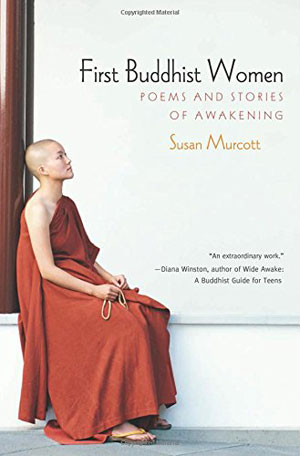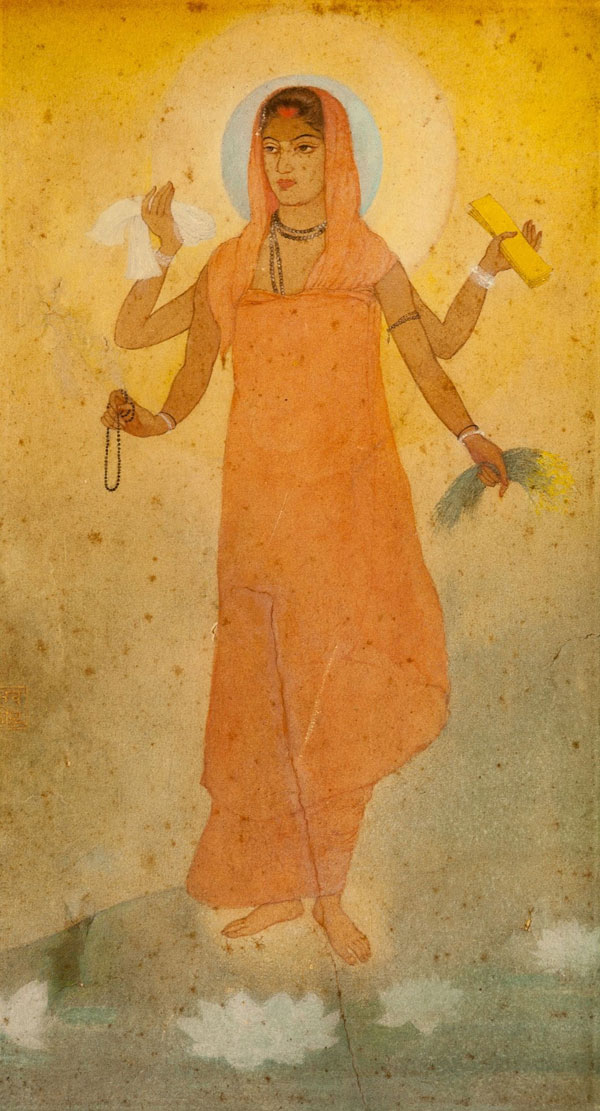
Photograph: [Public Domain] Wikimedia Commons
The power of the sacred feminine
From this state of limited consciousness, I appear once again to be a separate form within samsara; but from the state of expanded awareness, all of samsara is a manifestation of myself. I am a single undifferentiated Mind, yet I shine forth, like the radiant beams of the Sun, as a universe of countless living beings, all made of my light. All beings are united in me, for I am their consciousness, their form, their very being. Never are there any separate selves; that is only an illusion produced by the limiting of consciousness. All are but players in the outflowing radiance of the one Being. These transient forms live but for a moment, but I, the One, live forever. Though I appear as many, I am forever One, forever serene.
THUS SPAKE THE BUDDHA as recorded in the Dhammapada, under a peepul tree in Bodh Gaya upon the moment of his enlightenment. After a long and arduous path of striving and effort, the “Blessed One” realized the ineffable truth of all existence, namely that he was, ultimately, beyond the world of name and form, birth and decay, the ocean of maya.
In Lumbini, modern-day Nepal, Siddhartha Gautama of the Sakya clan was born to a king, Suddhodana, and his wife, Maya, in around 586 BCE. Unfortunately, his mother died seven days after the delivery and thus her sister, Mahapajapati Gotami, also married to Suddhodana, raised Siddhartha as her own.
At the time of Siddhartha’s birth, a holy man predicted the boy would end up ruling the world or renouncing it. And thus to ensure that his son would grow up as a great king, Suddhodana surrounded him with luxury and splendour. At sixteen, Siddhartha married the princess, Yashodara, and together they had a son, Rahula. All went well until he reached the age of twenty-nine. Travelling outside the palace gates, Siddhartha encountered four aspects of human existence he had never seen before—an invalid, an old man, a corpse and a wandering ascetic.
Profoundly shocked by the experience, Siddhartha decided right then and there to renounce his family and all his wealth and find the meaning of suffering and liberation from it. After six years of extreme austerities and intense study, Siddhartha Gautama realized that the secret to peace was in fact the “Middle Way”, a moderate path encompassing meditation and the ability to discriminate between a life bound by samara, the world of illusion and suffering, and nirvana, the underlying, all-pervading consciousness.
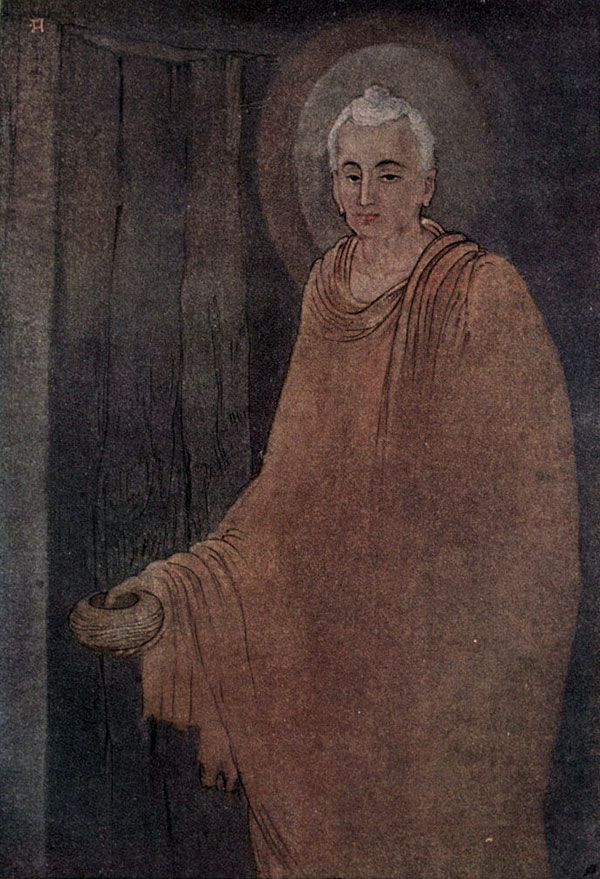
Photograph: [Public Domain] Wikimedia Commons
Instead, he put greater emphasis on the actual experience of the Self or no-Self (Anatta or Anatman), a place beyond name and form, and yet knowable by all those who sincerely wanted it. Thus by calling Reality “nirvana”, meaning “extinction” or “nonbeing”, he hoped to put an end to the increasingly diverse interpretations of the One. Indeed, the Buddha would often be asked to comment on all manner of metaphysical arguments about the origin and nature of the universe, upon which he would remain silent. What is the point, he would argue, when knowledge of onself is not even known?
Choosing to share this simple and yet profound insight, Siddhartha travelled to Benares to give his now famous sermon on the fundamental precepts of the Buddhist teachings. In his discourse, he expounds the “Four Noble Truths”: that there is suffering; that there is a cause of suffering (owing to the false belief in the illusory ego); that there is a remedy to suffering (enlightenment); and that there is cessation of suffering (through the destruction of ignorance by the practice of the “Noble Eightfold Path”—right understand, right intention, right speech, right action, right livelihood, right effort, right mindfulness, right concentration).
The Buddha, also know as the Tathagata, the “attainder of Truth”, subsequently established a sangha or order of monks where the dharma (or dhamma) of the doctrine on the nature of Reality was taught.
Regarding the ordination of women into the sangha, however, the Buddha was adamant that they were not allowed in. Believing that the female nature was prone to waywardness and possessed by the power of seduction, he feared that the monks (bhikkhus) would be adversely affected by their presence.
Nevertheless, owing to the fact that many men had either died in battles between warring clans or had decided to become mendicants, many women were left on their own, feeling displaced and lacking moral guidance. Mahapajapati, Siddhartha’s foster mother, thus became a source of strength and support for many women in the district. Moreover, inspired by the transformation in her foster son, she too was overcome by the desire to be initiated into the supreme knowledge.
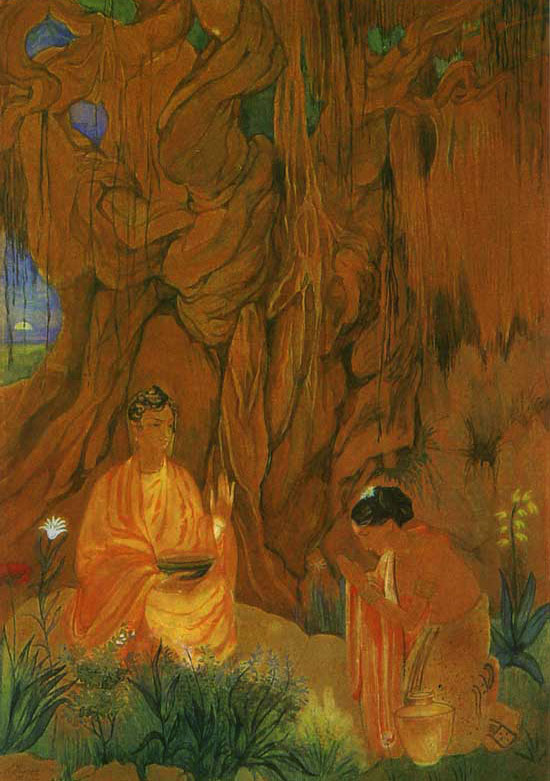
Photograph: [Public Domain] Art of Legend India
Now at one time the Buddha was staying among the Sakyans at Kapilavatthu in the Banyan Monastery. Mahapajapati Gotami went to the place where the Buddha was, approached and greeted him, and, standing at a respectful distance, spoke to him: ‘It would be good, Lord, if women could be allowed to renounce their homes and enter into the homeless state under the Dharma and discipline of the Tathagata.’
‘Enough, Gotami. Don’t set your heart on women being allowed to do this.’ [A second and a third time Mahapajapati made the same request in the same words and received the same reply.] And thinking that the Blessed One would not allow women to enter into the homelessness, she bowed to him, and keeping her right side towards him, departed in tears.
Then the Blessed One set out for Vesali. Mahapajapati cut off her hair, put on saffron-coloured robes, and headed for Vesali with a number of Sakyan women. She arrived at Kutagara Hall in the Great Grove with swollen feet and covered in dust. Weeping, she stood there outside the hall.
Seeing her standing there, the Venerable Ananda asked, ‘Why are you crying?’
‘Because, Ananda, the Blessed One does not permit women to renounce their homes and enter into the homeless state under the Dharma and discipline proclaimed by the Tathagata.’
Then the Venerable Ananda went to the Buddha, bowed before him, and took his seat to one side. He said, ‘Mahapajapati is standing outside under the entrance porch with swollen feet, covered in dust, and crying because you do not permit women to renounce their homes and enter into the homeless state. It would be good, Lord, if women were to have permission to do this.’
‘Enough, Ananda. Don’t set your heart on women being allowed to do this. [A second and a third time Ananda made the same request in the same words and received the same reply.]
Then Ananda thought: The Blessed One does not give his permission. Let me try asking on other grounds.
‘Are women able, Lord, when they have entered into homelessness, to realize the fruits of stream-entry, once returning, non-returning and arhatship [one who is free from cravings]?’
‘Yes, Ananda, they are able.’
‘If women then are able to realize perfection and since Mahapajapati was of great service to you—she was your aunt, nurse, foster mother; when your mother died, she even suckled you at her own breast—it would be good if women could be allowed to enter into homelessness.’
‘If, then, Ananda, Mahapajapati accepts the Eight Special Rules, let that be reckoned as her ordination.’
—Adaptation of Max Müller, Cullavagga, quoted in
Susan Murcott, First Buddhist Women: Poems and Stories of Awakening
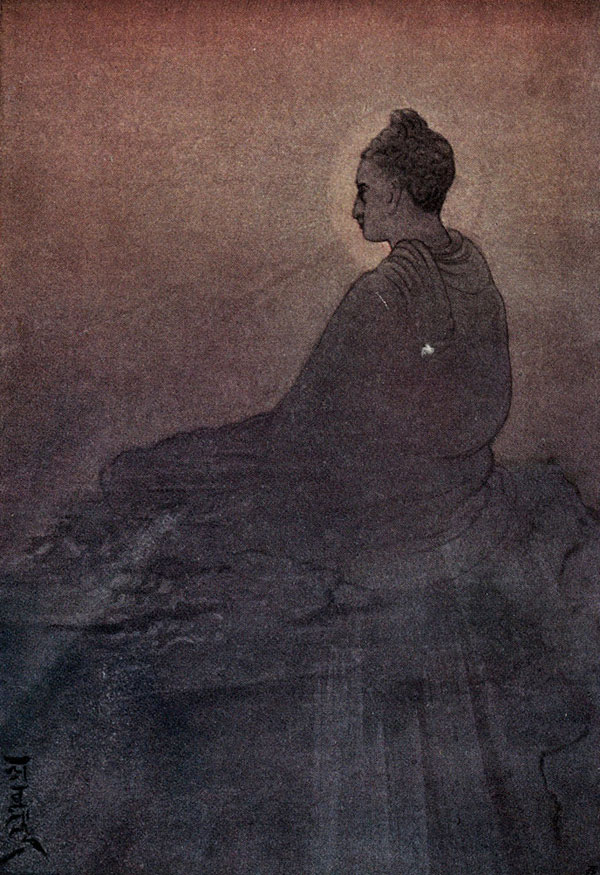
Photograph: [Public Domain] Wikimedia Commons
However, the issue of women’s rights was not to go away and Mahapajapati would raise the subject again:
‘I would ask one thing of the Blessed One, Ananda. It would be good if the Blessed One would allow making salutations, standing up in the presence of another, paying reverence and the proper performance of duties to take place equally between both bhikkhus and bhikkhunis according to seniority.’
And the Venerable Ananda went to the Blessed One [and repeated her words to him].
‘This is impossible, Ananda, and I cannot allow it. Even those teachers of false dharma don’t permit such conduct in relation to women; how much less can the Tathagata allow it?’
—Adaptation of Max Müller, Cullavagga, quoted in
Susan Murcott, First Buddhist Women: Poems and Stories of Awakening
It is difficult for us to appreciate the cultural context of the Buddha’s refusal and whether Mahapajapati was successful or not, we do not know. Despite her frustration, however, this did not stop her veneration for the Blessed One for revealing to her the sacred Dharma. Indeed, such was her gratitude that she and her Buddhist sisters went on to compose poetry and songs in praise of his teaching. Grouped together, their exquisite lyrics are collectively known as the Therigatha—theri means “women elders” or “women who have grown old in knowledge”; gatha means “verse”, “stanza” or “song”.
Such creative outpourings of women formerly from all strata of society—widows, wives, single women, prostitutes—thus became a living testament to the fact that enlightenment was exclusively for all, not just men of the upper echelons of the caste system. Initially handed down orally through the generations, the seventy-three poems of the Therigatha were finally recorded in Pali in the first century BCE.
Mahapajapati, meaning “great leader of the assembly”, was the Principal Mother of the Buddhist tradition. Her sublime poetry reveals her powerful wisdom and the attainment of arhatship, the state of perfection and the end of rebirth:
Homage to you Buddha,
best of all creatures,
who set me and many others
free from pain.All pain is understood,
The cause, the craving is dried up,
The Noble Eightfold Way unfolds,
I have reached the state where everything stops.I have been
mother,
son,
father,
brother,
grandmother,
knowing nothing of the truth
I journeyed on.But I have seen the Blessed One;
this is my last body,
and I will not go
from birth to birth
again.Look at the disciples all together,
their energy,
their sincere effort.
This is homage to the buddhas.Maya gave birth to Gautama
for the sake of us all.
She has driven back pain
of the sick and dying.
—Susan Murcott, First Buddhist Women: Poems and Stories of Awakening
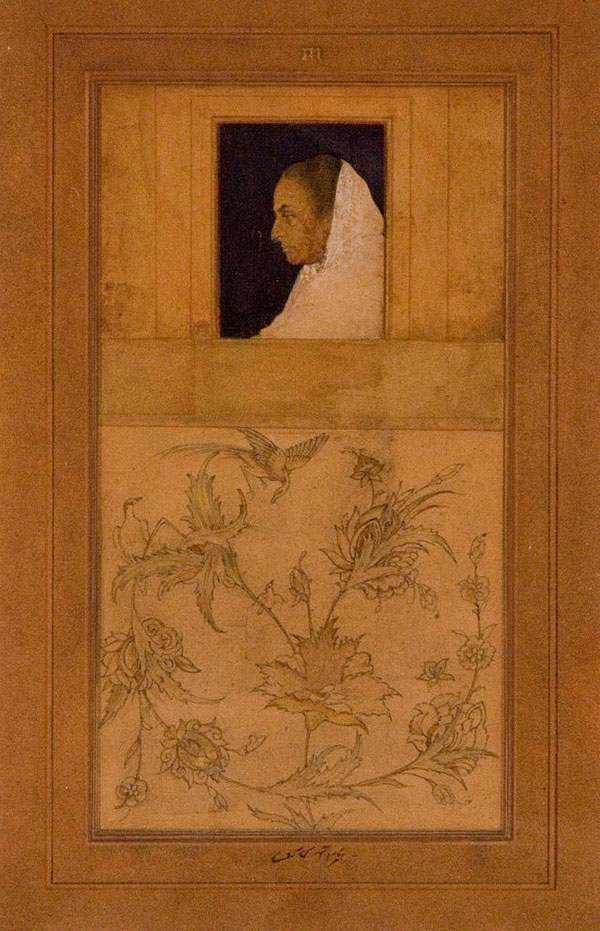
Photograph: [Public Domain] Wikimedia Commons
Interestingly, his prophesy in one sense was to come true—by the fifth century CE, the sangha of Buddhist nuns had, to all intents and purposes, died out and it would take the pioneering work of Ayya Khema (1923–97) to establish Parappuduva Nuns Island, just off the coast of Sri Lanka, and re-establish the rights of women Buddhists.
Moreover, as the centuries passed after the Buddha’s death, the pure Buddhist teaching diluted into multifarious interpretations, spiltting into two “vehicles”—the lesser vehicle of Theravada Buddhism in southern India, which believes in a personal and final enlightenment; and the greater vehicle of Mahayana Buddhism, in northern India, which believes that enlightenment should be postponed in order for the individual to reincarnate and help all other sentient beings.
Inevitably, a complex Buddhist mythology would also emerge, including the deification of the sacred feminine, in particular the female bodhisattva, Tara. This is precisely not what the Buddha had wanted but perhaps it does serve to neutralize the negative perception of women and reaffirm their equal ability to realize the Truth.
Post Notes
- Ajahn Sumedho: The Sound of Silence
- Alexandra David-Néel: My Journey to Lhasa
- Irina Tweedie: The Daughter of Fire
- Alicia Torres: Darshan
- Teresa of Ávila: The Ecstasy of Love
- Hildegard of Bingen: Sibyl of the Rhine
- Archana Bahadur Zutshi: Poetic Candour
